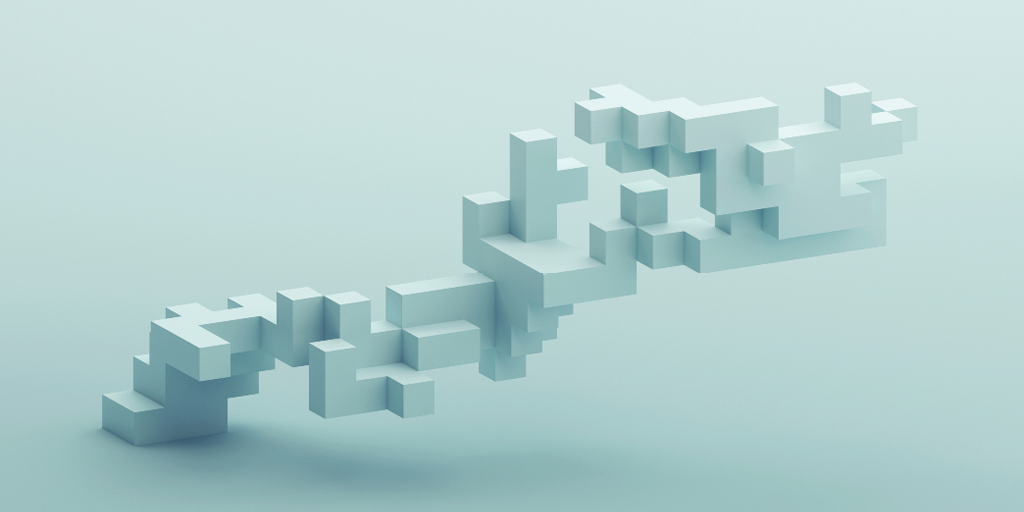
Blockchain is a new way of protecting and communicating data in the form of a decentralized ledger that’s revolutionizing intellectual property rights.
Since blockchain is the technology behind the growing trend of NFTs (non-fungible tokens), let’s take a closer look at it.
What is blockchain?
Blockchain is a process that records a wide variety of data by using an innovative, secure and decentralized structure.
The information most commonly stored in blockchains concerns transactions such as sales or commercial trade.
The data is recorded in “blocks” that contain complete details about each transaction.
What is a block?
A block is a data entry or a grouping of data.
All the information about a particular transaction is included for any purpose such as selling a creative work or transferring intellectual property.
For example, the block could contain data on the specific terms and conditions for assigning copyright or licensing a trademark or patent.
Secure, transparent and permanent
The main advantage of blockchain is that the transaction data it contains is secure.
In a blockchain, every block is first verified then added to the sequence of all the previous blocks and can never be modified once it’s been added.
This process is designed to ensure that hackers can’t change the data, for instance by hijacking, modifying or cancelling the transaction.
Verified
Blockchain is based on the principle that all recorded transactions are valid and final.
In that case, how is it possible to confirm that the transaction recorded in the blockchain is actually valid and that it hasn’t been altered at any point?
As a general rule, blockchain technology uses a system where thousands of computers are called on to verify every transaction. This meticulous method ensures almost completely that hackers are unable to alter the data entered in the ledger. The chain can therefore be confirmed as unalterable.
Decentralized
A major advantage of blockchain technology is that operations are decentralized.
Unlike conventional transactions with banks, blockchain transactions aren’t dependent on a central authority to verify that they’re secure.
How blockchain got started
2008 — The global financial meltdown and the collapse of banks considered “too big to fail” led various economic players to question their trust in centralized banking systems.
The idea of decentralizing transaction data stems from this quest to circumvent the monopoly of institutions such as banks and insurance companies.
2009 — To achieve that goal, developers created Bitcoin, a decentralized currency without intermediaries.
Blockchain and cryptocurrencies
Blockchain is known for making it feasible to create cryptocurrencies such as Bitcoin and Ethereum. Both those cryptocurrencies use blockchain technology to ensure that all their transactions are monitored transparently.
In fact, most NFTs operate by relying on cryptocurrencies.
The NFT data is inserted into a block that’s part of a blockchain (Ethereum in most cases) to make the information accessible to everyone and, of course, confirm that it’s secure.
Advantages of blockchain
Blockchain allows unique, authentic and decentralized data to be stored. Instead of keeping the data on a single computer, blockchain spreads it among an array of computers that are put into use to verify every transaction, making sure there is no suspicious activity.
This method provides a very high level of security for the data contained in a blockchain.
Paradoxically, Blockchain technology has been adopted quickly by the banks themselves to make their operations more secure!
Foolproof?
Some diehards say that blockchain technology is infallible but not everyone agrees.
The most optimistic backers see blockchain being rolled out in the future to create all sorts of ledgers: digital land registries, intellectual property rights registries or, more controversial, registers of dangerous offenders.
Environmental footprint
The biggest drawback when it comes to blockchain and cryptocurrencies is their ecological impact as energy-intensive technologies.
According to a study done by Selectra, if Bitcoin were a country, it would be the world’s 26th largest consumer of electricity based on its annual consumption of 134 TWh in January 2022. Bitcoin uses more electricity than countries such as Sweden and Argentina.
— Translated from climate.selectra.com
Other drawbacks of blockchain
Blockchain remains controversial from an economic point of view. The question is whether blockchain is truly useful in our day-to-day lives. Apart from very technical, niche utilizations, couldn’t blockchain simply be considered an amusing gadget for online speculators?
To make matters worse, some people claim that blockchain’s much-vaunted security is nothing but a mirage. Massive hacks have made millions of dollars disappear even though the transactions were “secured” by blockchain technology.





